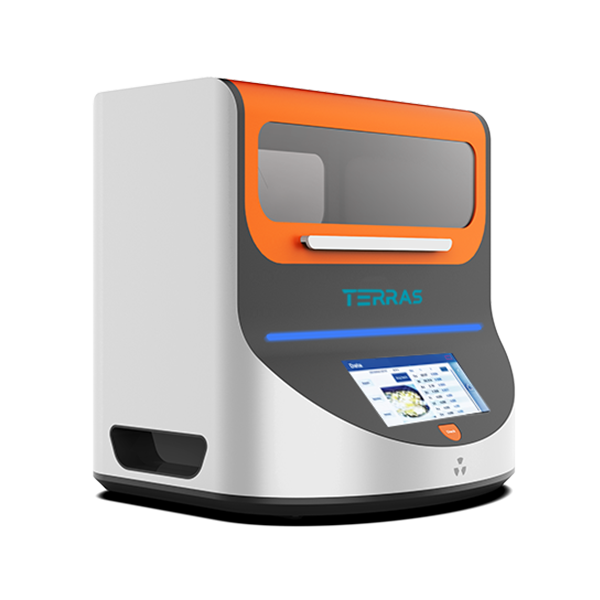
Gold and Jewelry
A high-tech enterprise focusing on the development and application of X-ray technology products, committed to becoming a leading supplier of X-ray industrial testing solutions.
The Ultimate Guide to Recycling Scrap Catalytic Converters——XRF technology
Recycling scrap catalytic converters has become an increasingly important industry in today’s world, both for its environmental benefits and its ability to recover precious metals that are in high demand. At the heart of this transformation is X-ray fluorescence (XRF) technology, a groundbreaking innovation that has revolutionized how catalytic converters are analyzed, processed, and recycled.

Terras Aurora 900 benchtop Precious Metal Analyzer
What Are Catalytic Converters?
Catalytic converters are a critical component of modern internal combustion engines, found in cars, trucks, and even some industrial machinery. These devices are designed to reduce harmful emissions by converting toxic gases, such as carbon monoxide, nitrogen oxides, and hydrocarbons, into less harmful substances like carbon dioxide, nitrogen, and water vapor.
However, catalytic converters are not just environmentally significant; they also contain precious metals—platinum (Pt), palladium (Pd), and rhodium (Rh)—that are in high demand for their use in various industries, including electronics, jewelry, and chemical production. Over time, these precious metals become a focal point for recycling efforts.
The Importance of Recycling Catalytic Converters
Environmental Impact: The recycling of catalytic converters reduces the need for mining, which can be highly damaging to the environment. By recovering valuable metals like platinum, palladium, and rhodium, we can prevent these metals from ending up in landfills and instead reuse them for manufacturing purposes.
Economic Value: Catalytic converters contain precious metals that are not only expensive but are also in limited supply. By efficiently recovering and recycling these materials, scrap catalytic converters can be transformed into a valuable resource, generating revenue for recyclers and helping stabilize the global supply of these metals.
The Challenges of Recycling Scrap Catalytic Converters
One of the primary challenges in recycling catalytic converters is accurately determining the metal content inside each unit. Catalytic converters are designed to last for a long time, and the metals inside can vary significantly in quantity and type depending on the make, model, and year of the vehicle.
What Is XRF Technology?
X-ray fluorescence (XRF) is a non-destructive analytical technique that allows for the rapid identification and quantification of elements in materials. In the context of catalytic converter recycling, XRF is used to determine the exact content of precious metals within a scrap catalytic converter.
Here’s how it works:
XRF Analysis: When a catalytic converter is subjected to XRF analysis, the device emits X-rays, which interact with the atoms in the material. This interaction causes the atoms to emit secondary (fluorescent) X-rays, which are then measured by the XRF device.
Quantification: By measuring the intensity of the emitted X-rays, the XRF device can also determine the concentration of each element, providing recyclers with an accurate assessment of the precious metals within the catalytic converter.
Why XRF Technology Is a Game Changer for Recycling Catalytic Converters
1. Speed and Efficiency
One of the most significant advantages of XRF technology is its ability to provide real-time, on-site analysis. Traditional methods, such as sending samples to a laboratory for testing, can take days or even weeks to return results. In contrast, XRF analyzers deliver immediate feedback, allowing recyclers to process scrap catalytic converters quickly and make informed decisions about the value of each unit.
2. Non-Destructive Testing
Unlike other methods that require physical samples or damage to the catalytic converter, XRF is a non-destructive technique. This means recyclers can preserve the entire catalytic converter for future processing, while still gaining valuable insights into its metal content.
3. Accuracy and Precision
XRF technology is highly accurate and provides a detailed breakdown of the precious metals within the catalytic converter. Traditional methods often involve general estimations or assumptions about the metal content, leading to less reliable results.
4. Cost-Effective
XRF analyzers, while initially an investment, can save recyclers money in the long term. The ability to quickly identify the content of scrap catalytic converters minimizes costly errors in sorting and processing. With XRF, recyclers can avoid unnecessary labor and reduce the risks of human error, improving their overall profitability.

Terras Aurora 900 benchtop Precious Metal Analyzer
5. Portability and Flexibility
XRF analyzers come in both handheld and desktop versions, offering recyclers the flexibility to analyze catalytic converters on-site or in a laboratory setting. Handheld XRF analyzers are particularly useful for mobile recyclers who need to test units in the field, whether at salvage yards or auto repair shops.
AURORA 900 benchtop gold analyzer offers a rapid and remarkably precise method for assessing karat or gold concentration, serving quality control, pricing, and practical utilization needs. It empowers users to conduct an immediate, cost-efficient, and entirely non-destructive examination to ascertain gold concentration and authenticate alloy composition. Beyond gold, the device delivers exceptional performance for various other valuable metals of significance. The
analyzers are equipped with a comprehensive precious metals suite encompassing elements such as Rh、Pd、Au、Ir、Pt、Os、Ru、Re、Ag、In、Cr、Cd、Ni、Pb、Sb、As、Cu、Zn、Sn、W、Ta、Hf、Fe、Co、Zr、Bi、Mn、Ti、Ge、Ga.
Conclusion: The Future of Catalytic Converter Recycling
As the demand for precious metals continues to rise and environmental concerns grow, XRF technology is poised to play a pivotal role in shaping the future of catalytic converter recycling. By providing accurate, rapid, and non-destructive analysis, XRF technology empowers recyclers to maximize the value of scrap catalytic converters, while also benefiting the planet.
Join Us
Subscribe to our email list for updates & promotions.



